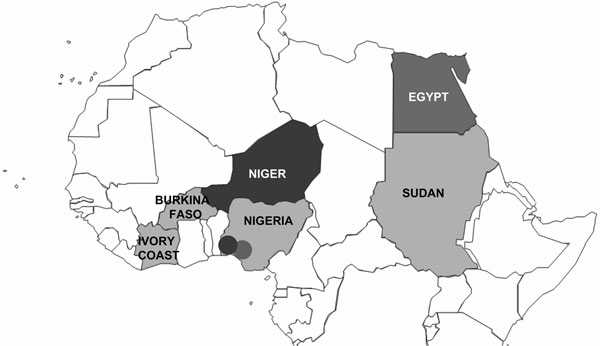Volume 13, Number 4—April 2007
Dispatch
Genetic Characterization of HPAI (H5N1) Viruses from Poultry and Wild Vultures, Burkina Faso
Figure 2

Figure 2. Northern equatorial Africa. Only countries where highly pathogenic avian influenza A (H5N1) sequences from avian species are available are named. Strain similarities are indicated as follows: light gray for countries with cluster I strains, black for countries with cluster II strains, and dark gray for countries with cluster III strains.
Page created: June 28, 2010
Page updated: June 28, 2010
Page reviewed: June 28, 2010
The conclusions, findings, and opinions expressed by authors contributing to this journal do not necessarily reflect the official position of the U.S. Department of Health and Human Services, the Public Health Service, the Centers for Disease Control and Prevention, or the authors' affiliated institutions. Use of trade names is for identification only and does not imply endorsement by any of the groups named above.